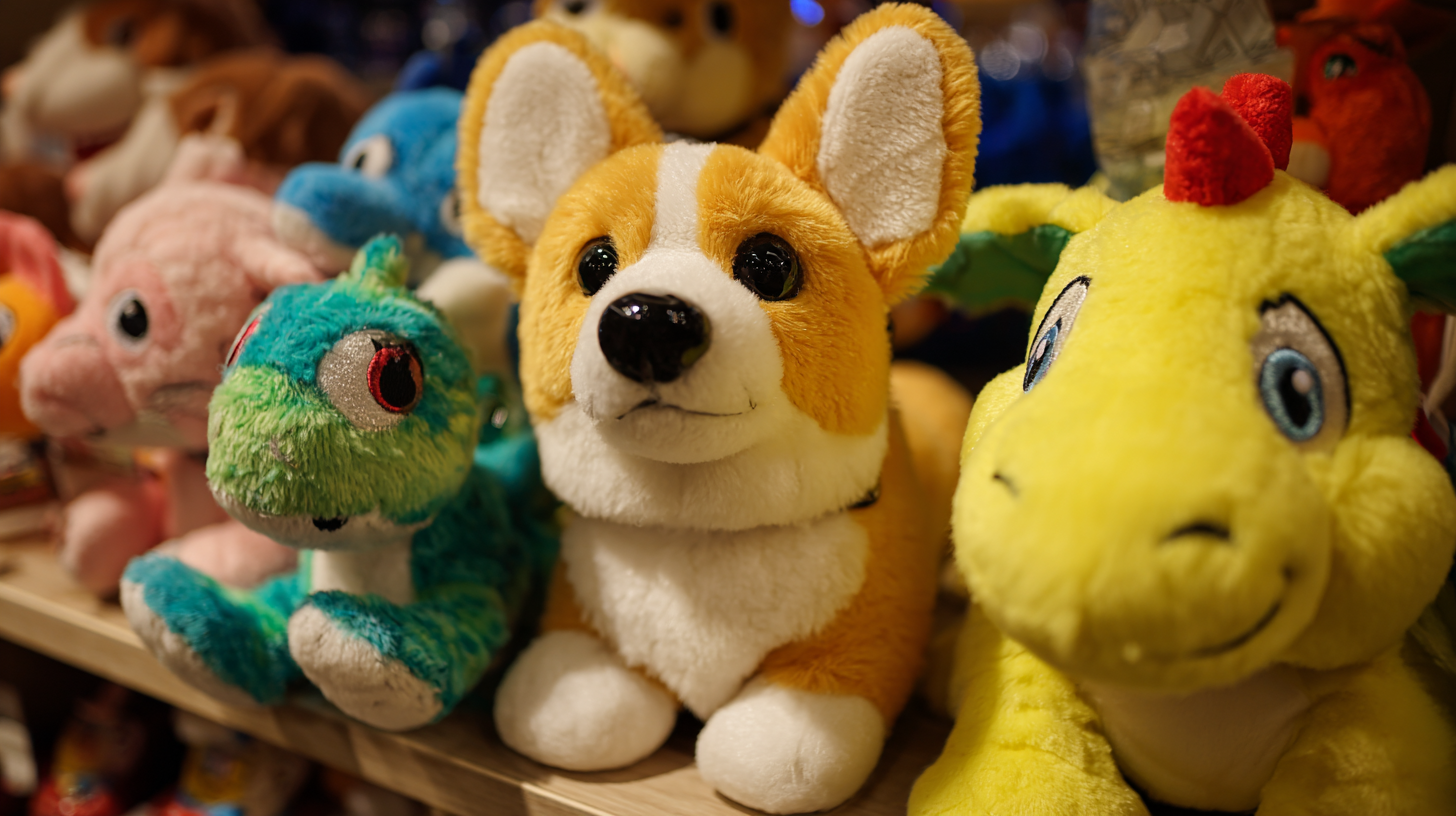$0.00
When it comes to choosing the best dog toys, understanding your pup's unique play style is essential for their physical and mental well-being. According to a report by the American Pet Products Association, approximately 70% of dog owners invest in toys, recognizing their role in promoting exercise and reducing boredom. Moreover, a survey by the Association for Pet Obesity Prevention highlights that 55% of dogs are overweight, often due to insufficient activity and engagement.

Selecting the right dog toys not only keeps your furry friend entertained but also supports their health by encouraging play that aligns with their instincts and personality. In this blog, we will delve into different play styles and how to choose toys that cater to each pup's preferences, ensuring they remain active, happy, and healthy.
Understanding your dog's unique play style is crucial when choosing the best toys for them. Dogs are diverse in their behavior and preferences, often displaying tendencies such as chasing, tugging, or chewing. For instance, high-energy breeds like Border Collies often gravitate towards interactive toys that allow them to run, fetch, and engage in agility exercises. On the other hand, more laid-back breeds might prefer plush toys that they can gently carry around or cuddle with.

Additionally, some dogs may exhibit a strong prey drive, leading them to enjoy toys that mimic small animals, such as squeaky toys or those with crinkly materials. Tug-of-war enthusiasts thrive on durable ropes or rubber toys that can withstand strong pulls. It’s essential to observe your pup while they play to identify what excites them most, ensuring you select toys that cater to their specific interests. By tailoring toy choices to match your dog's play style, you not only enhance their joy but also promote their physical and mental well-being.
Understanding your dog's unique play style is crucial in selecting the best toys that will keep them engaged and happy. One effective observation technique is to watch how your pup interacts with various play items. Take note of whether your dog prefers to chew, chase, or fetch, as this can significantly determine their toy preferences. For instance, if your furry friend enjoys chewing, durable chew toys made of rubber or nylon may be the best choice.
Another tip to consider is introducing a variety of toys to see which ones capture your dog's interest. Rotate their toys regularly to prevent boredom and promote enthusiasm during playtime. You might observe that your dog shows a preference for squeaky toys or those that mimic prey movements, such as balls or stuffed animals. Engaging with your dog during play can also provide insights; their excitement level, tail wagging, and vocalizations are all indicators of what they truly enjoy.
Lastly, involve your dog in the selection process. Allow them to sniff and interact with different toys when shopping together. This hands-on approach not only makes the experience fun for both of you but ensures you pick toys that align with their individual play style. By carefully observing and engaging your pup, you can make informed choices that will enrich their playtime and overall well-being.
When it comes to selecting dog toys, understanding your pup's unique play style is crucial. Research conducted by the American Kennel Club indicates that dogs, much like humans, have distinct preferences in how they engage with toys. For active chewers, durable materials such as rubber and nylon can withstand rigorous play, reducing the risk of ingestion as well as the frequency of replacement. According to a survey by The Dog People, 72% of pet owners reported that durable toys lasted longer than their plush counterparts, showcasing the importance of choosing the right material to match your dog’s chewing habits.
Moreover, the shape of a toy can significantly influence a dog's interaction with it. Toys designed with irregular shapes can promote mentally stimulating games of fetch, while soft toys may provide comfort for those pups that enjoy gentle play. The Pet Industry Joint Advisory Council states that interactive toys not only keep a dog entertained, but they also foster healthy exercise and mental stimulation, which are essential for a pup's overall well-being. Selecting toys that cater to these factors enhances playtime and enriches your furry friend's life.

When selecting toys for your dog, addressing common issues such as durability, safety, and appeal is crucial. A 2021 study by the American Society for the Prevention of Cruelty to Animals (ASPCA) indicates that nearly 50% of dog owners reported purchasing toys that quickly broke or became unusable. This highlights the importance of investing in high-quality materials designed to withstand tough play. Durable toys, especially those made from rubber or reinforced fabric, not only last longer but also provide better engagement for your pup.
Safety is another critical factor to consider. According to the Pet Product Association, more than 20% of pet-related injuries are linked to toys, often due to choking hazards or toxic materials. Opting for non-toxic, BPA-free toys ensures your furry friend is safe during playtime. Moreover, dogs have unique play styles—some prefer tugging while others enjoy chewing—which should be matched with appropriately designed toys to maximize engagement and minimize the risk of wear and tear. Tailoring your selection to these preferences can lead to longer-lasting toys that keep your pup entertained and thriving.
Engaging with your pup is essential not only for their physical health but also for their emotional well-being. To create an interactive playtime experience, it's important to understand your dog's unique play style. Whether your dog enjoys fetch, tug-of-war, or puzzle-solving, selecting toys that cater to these preferences can significantly enhance your bonding time. Opt for durable fetch toys that can withstand vigorous play, or consider interactive puzzles that challenge their intelligence and keep them mentally stimulated.
Encouraging interaction goes beyond just the toys you choose; it also involves how you play with your dog. Incorporate a variety of games that require participation from both you and your pup. For instance, engaging in tug-of-war can strengthen your bond while teaching your dog about appropriate playfulness. Additionally, using toys that promote chasing or retrieving encourages them to stay active and boosts their confidence. By actively participating in their play, you not only provide entertainment but also reinforce the trust and connection between you and your furry friend.
| Toy Type | Play Style | Material | Recommended Age | Interactive Potential |
|---|---|---|---|---|
| Fetch Balls | Retrieval | Rubber | All Ages | High |
| Tug Toys | Tugging | Nylon | 6 months and up | Medium |
| Squeaky Toys | Chewing | Plastic | Puppies | High |
| Puzzle Toys | Mental Stimulation | Wood or Plastic | All Ages | Medium |
| Rope Toys | Chewing and Tugging | Cotton | 6 months and up | Low |